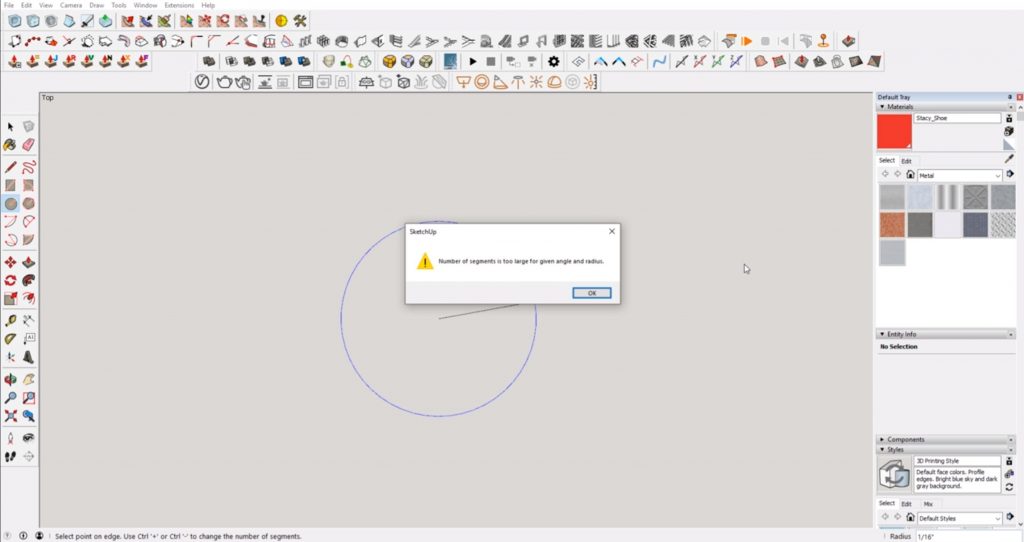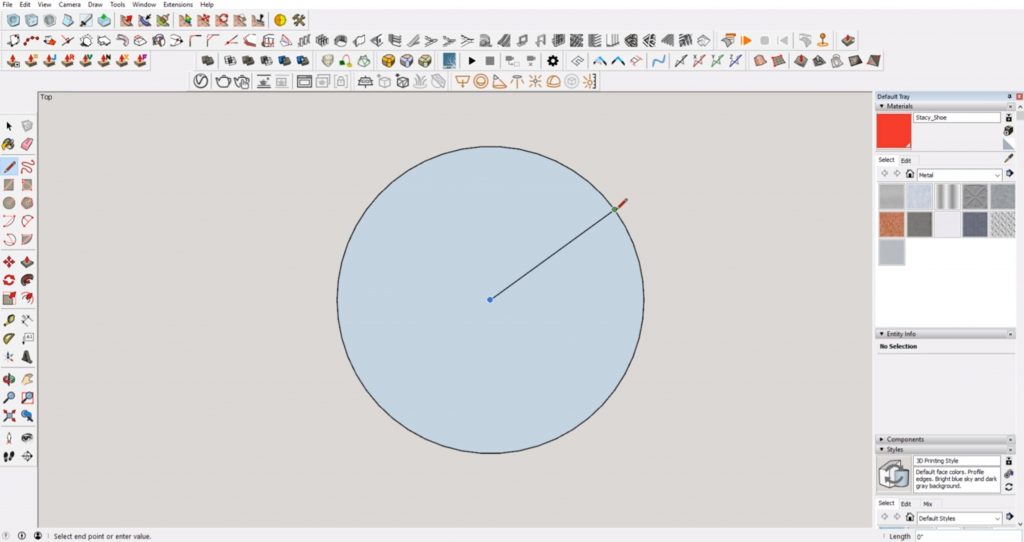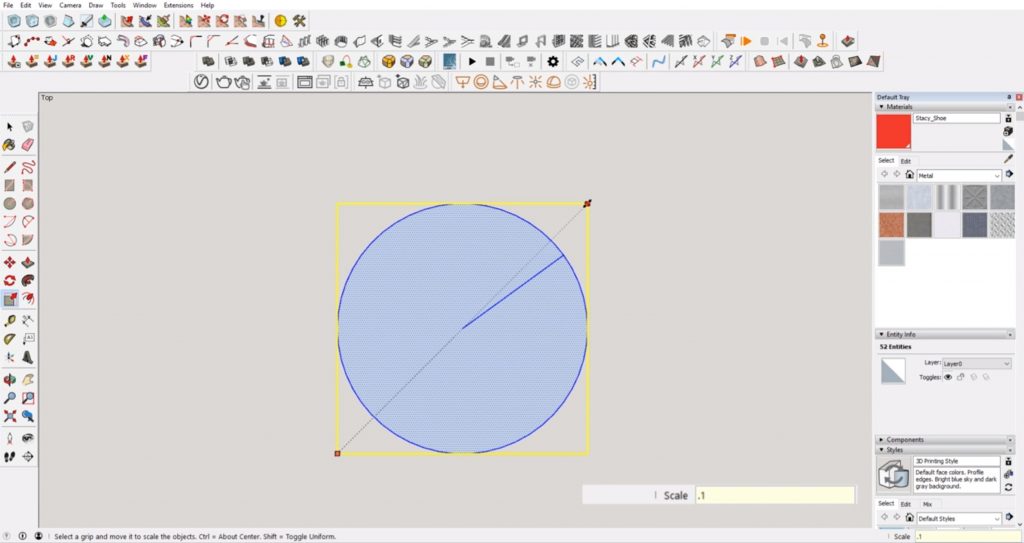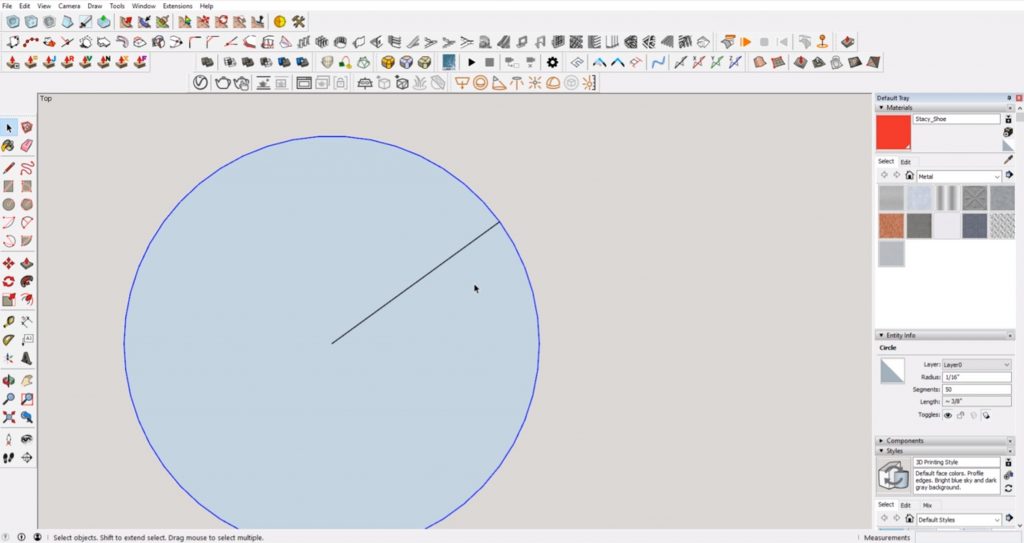Dealing with Sketchup Error: “Number of Segments too Large…”

“Number of Segments too Large for Given Angle and Radius.” Sound familiar? Chances are if you’ve modeled small objects in Sketchup you’ve seen this Sketchup error message before. In this article, we’ll go over why this error occurs and how you can work around it!
Most likely, if you’re getting this error you’re trying to draw a circle or arch at a small scale. For example, when we tried to make a circle with 50 sides and a 1/16” radius, the message popped up. This is because Sketchup is (currently) limited in the level of detail it can draw and it isn’t able to draw segments at such a small scale. This can become especially annoying when trying to model intricate details and you can’t get the level of accuracy that you want. We’ve noticed it’s most prevent when you’re trying to model something at scale for 3d printing. Talk about interrupting the workflow! A simple way to fix this is by scaling up your circle and then scaling it back down at the end. Here’s how it works:
Working Around the Sketchup Error

Scale Up. An easy way to work around this error is by scaling up your circle by 10. For example, our first circle had a radius of 1/16 or .0625. To scale up, simply multiply the radius by 10. Now when you draw your circle, you will still use 50 for the number of sides but instead of .0625, type “.625” for the radius. Sketchup should be able to draw this circle with no problems.
Measure the Radius. If you want to double check your measurements, you can take a quick measurement of the radius before and after you scale the circle. Use the line tool to draw a line from the center to one of the endpoints on the circle. Then, use the tape measure tool to measure the line. It should read 5/8” after you scale it up by 10.

Scale Down. After you’ve finished modeling at the larger scale, you’ll want to scale it back down so it is the correct size. Hit “S” on your keyboard to open the scale tool. Click on the top right corner to scale the circle uniformly. Then, type “.1” to scale the circle back down by 10%. Hit “enter.” Now, use the tape measure tool to measure the new radius and it should read “1/16.”

This Sketchup error hack can be useful when trying to model objects for 3D printing because you may want to eliminate as many hard edges as possible. Making a shape with more edges will create a smoother final product. To avoid getting the message at all, try modeling everything in your model scaled up by 10%.
Save. When you are finished modeling, save a copy of your original file. Then, at the very end, scale everything down by 10%. By having a saved file of your scaled up version you will save yourself a lot of headache and get the accuracy you are looking for!

Need help with another Sketchup error? Be sure to check out our full list of tutorials here for more helpful tips and tricks!
Happy Hacking!

No comments yet.